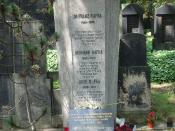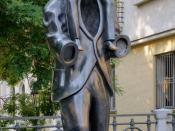Fictional stories are some of the most creative and provocative writings found throughout the literary world. Authors conjure up worlds of make believe or tell the reader tales that takes the mind on a journey. In the analysis of these writings of fiction, one can find, although not always with ease, six central elements. Each of these elements helps develop the story and make it a complete work. To remove any of these items from a fictional tale would lessen the value and richness of the story told. In Franz Kafka's work, "A Hunger Artist," you can see examples of these integral elements of fiction: setting, character, point of view, plot, theme, and symbol.
First, Kafka introduces us to the setting. We know that in today's society there are no true hunger artists. The story tells us about the downfall of the profession in "these last decades," which leads the reader to believe that the story takes place quite a few years back.
Although a specific location is not given for the events that transpire, we are given details of the hunger artist's cage as well as some imagery describing the circus location that is the setting for the last portion of the tale.
The second aspect of fiction is that of character. There are few characters in "A Hunger Artist." Kafka focuses on the hunger artist himself, allowing us to notice a few supporting figures in the story such as the impresario and the young ladies who were chosen to aid the artist. Since there is very little information given on any character in the story, save the artist himself, they are flat characters. The hunger artist is somewhat more round, although not as round in many other works.
Next we must determine the point...


